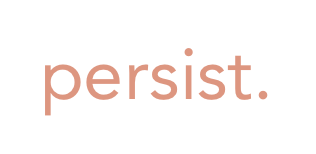How to Reduce Mental Load Without Dropping the Ball
If you’ve ever felt like…
your mind never shuts off
there’s always something you’re forgetting
… welcome to the mental load.
You don’t need more productivity hacks or self-care reminders.
You need a system that lightens the invisible work of running a household.
Reducing mental load isn’t about doing less but it’s about making what you do visible, shareable, and sustainable.
Here’s how to start.
Step 1: Make the Invisible Visible
You can’t fix what you can’t see.
Most of the stress comes from untracked, unspoken work—the things that live in your head, not on a list.
Use the CareLoad Assessment to map what’s really on your plate. It shows how mental, emotional, and logistical tasks add up across your household so you can stop guessing and start shifting.
When the invisible becomes visible, fairness stops being a feeling and becomes data.
Step 2: Stop Doing What Doesn’t Matter
Some of your load comes from outdated standards—beliefs about what makes a “good” parent, partner, or home.
It’s okay to stop doing the things that no longer serve your family’s current season.
Ask yourself:
Does this actually make our lives better or just look better?
Am I doing this out of habit, guilt, or real value?
Persist calls this first part of The Shift Method: Stop.
It’s not about dropping the ball, it's about setting it down on purpose.
Step 3: Shape Standards Together
Fairness isn’t just splitting tasks 50/50, it’s aligning on what “done” looks like.
Talk about the expectations behind your routines:
“What’s our standard for clean?”
“How often do we actually need to do this?”
“Could we simplify this process?”
You’ll find that many frustrations aren’t about workload instead, they’re about unspoken differences in standards.
Persist helps couples shape these standards consciously, so both partners can succeed without micromanagement or resentment.
Step 4: Share the Load (Fairly)
Once you can see your CareLoad and align on standards, sharing becomes easier.
It’s no longer “helping”, it’s co-ownership.
Let each person take full ownership of specific areas, from start to finish.
If you need to, use Persist’s “Pin” feature to flag tasks that feel misaligned or draining.
Then review them together to decide what to stop, shape, or share next.
Step 5: Track the Wins
The mental load shrinks when progress feels visible.
Celebrate small shifts because every redistribution of effort, every honest conversation, and every simplified routine adds up.
Persist helps you track those wins with insights that remind you what’s changed:
“Last month, you handled 90% of meal planning. This month, your partner owns three dinners a week. That’s progress.”
This feedback loop keeps motivation high and resentment low.
You don’t have to keep juggling everything to keep your family running.
Start by seeing what’s really heavy and then shift it with Persist.
You’ve done enough managing. It’s time for relief.
Get Persist Now to see your CareLoad, customize your household system, and start sharing the work fairly.
